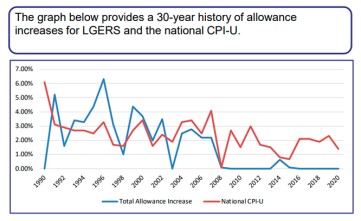North Carolina’s strength, beauty, language, and allure come from its land as much as the people who reside in its 100 counties and 552 distinct municipalities. It’s no wonder that our great state has held the distinction of having more dialects than any other state in the United States, driven by its diverse geography from the mountains to sea and the people who have inhabited it from the past to the present. From the lush 221 square miles of Clay County in the far western corner of our state to the expansive Dare County in the east with its 1,562 square miles — we have something special.
The governance of these distinct and unique areas of the state consisting of cities, towns, and villages is consequentially complex, due to the variety of needs dependent on population, geography, and economic factors. The General Assembly grants charter authority for each entity to operate as a governing body under the state statutes and constitution. Hyde County’s three residents per square mile require fewer government services than Mecklenburg County’s 2,055 residents per square mile, though each scenario brings its own challenges to the citizens, county managers, and commissioners. Services offered to residents — and even the benefits offered to local government employees — can vary fairly dramatically. A prime example of this difference in benefits is participation in the Local Government Employees Retirement System (LGERS), which is an optional benefit that may or may not be offered by county our municipality.
LGERS is administered by the Office of the Treasurer and relies on its Board of Trustees to act as the decision-making body regarding its policies and operations. The LGERS Board of Trustees is comprised of 13 members with some serving on the TSERS Board as well. Among the Trustees are its two ex-officio members, the State Treasurer (who chairs the Board), and the Superintendent of Public Instruction. Two appointments are made by the General Assembly, and the Governor appoints eight members representing local government in these areas:
- A mayor or member of a governing body in a city or town
- A city manager
- A county manager
- A county commissioner
- A law enforcement employee
- A local government employee
- A retired government employee
- An active or retired member of the Rescue Squad Workers’ Pension Fund
Prior to 2006, the General Assembly provided cost-of-living adjustments (COLA) to LGERS participants as part of its budget legislation process. Since 2006, it has delegated responsibility to the LGERS Trustees, but within the framework of these existing legislative restrictions:
- Currently allows them to provide up to 4% as long it does not exceed the Consumer Price Index.
- Only allows a COLA to be paid based on record of investment gains and losses during the preceding three-year period.
As the chart below shows, investment losses with the 2008 Great Recession set a course for the widest historical disparity between retirement disbursements and inflation. What is not reflected on this chart, from 2021 to present, is an additional 16% increase in the CPI-U (inflation rate).

To put context to these roughly 30 months, is the reduction in buying power is nearly the same as what occurred in the decade between 2010-2020 (17.6 %). The current reality brings stagnated cost-of-living adjustments for retirees, with contributing factors being changes in the legislative administration of LGERS, rising costs to the counties and municipalities to level up the fund, and the actuarial lowering of return expectations for the fund.
I share this information with NCRGEA members, with the general public, and with any of our elected leaders so that, together, a dialogue can begin on finding opportunities to begin moving forward — away from the current state of “no COLA” for government retirees. TSERS and LGERS participants have significant shared histories and outcomes in regard to COLA. But some unique components of LGERS compared to other pensions managed by the Office of the Treasurer will require broader partner collaborations to resolve these COLA challenges. Casting the vision for a prosperous North Carolina will require a vision for the significant portion of its citizens who work and retire from public service, or North Carolina will fall short of its full potential.
In closing, I leave you with a quote by Albert Einstein that “no problem can be solved from the same level of consciousness that created it.” In context of this message on LGERS, the forces that brought us to this point are to be noted but cannot tether new and innovative ways to improve the lives of governmental retirees, maintain a talented and loyal public service workforce, and encourage the broader economic prosperity of North Carolina.
Sincerely,
Tim O’Connell
NCRGEA Executive Director


